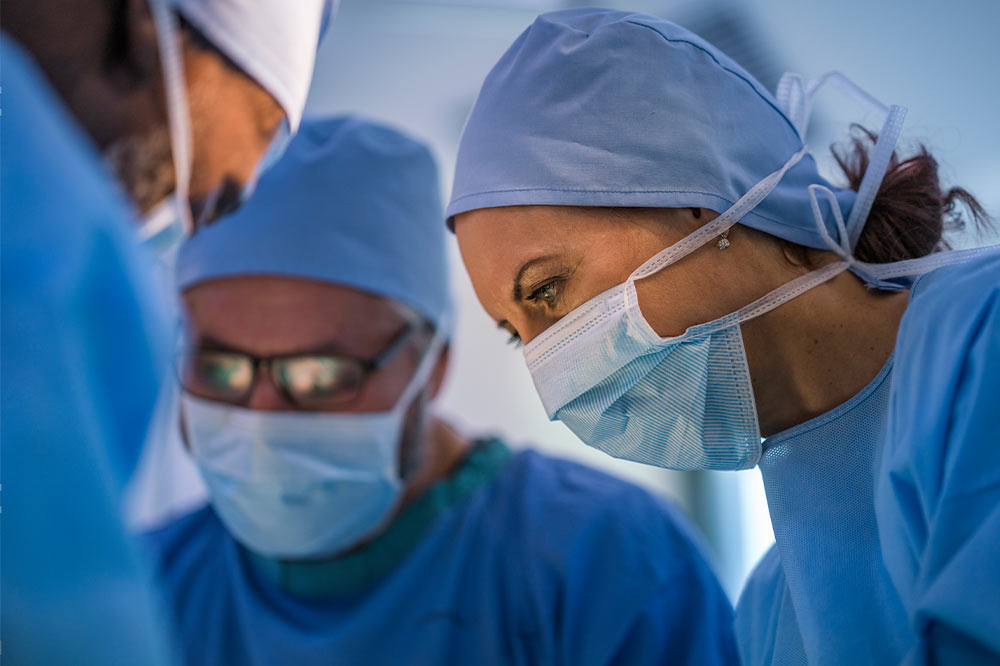Procedures
Facial Injuries
OMS are trained to repair and reconstruct injuries to the face, mouth and jaws.
The Nature of Maxillofacial Trauma
Soft Tissue Injuries of the
Maxillofacial Region
When soft tissue injuries such as lacerations (cuts) occur on the face, they are repaired by “suturing” (stitches). In addition to the obvious concern of providing a repair which yields the best cosmetic result possible, care is taken to inspect for and treat injuries to structures such as facial nerves, salivary glands and salivary ducts (or outflow channels). Oral and Maxillofacial Surgeons are well trained and proficient at diagnosing and treating facial lacerations as well as intra oral lacerations.
Fractures of the bones of the face are increasingly common, and may affect the patient’s vision, their ability to breathe, speak, and perhaps even swallow. Bones that are broken in the face, such as the lower jaw, upper jaw, palate, cheekbones, and eye sockets, are treated in a manner similar to the fractures in other parts of the body. Treatment may require hospitalization. The specific form of treatment is determined by various factors which include the location of the fracture, the severity of the fracture, and the age and general health of the patient. When an arm or a leg is fractured, a “cast” is often applied to stabilize the bone and allow for proper healing. Since a cast cannot be placed on the face, other means have been developed to stabilize facial fractures.
Fractures of the jaws are best treated and stabilized by the surgical placement of small “plates and screws” at the involved site. This technique of treatment can often allow for healing and eliminates the need for having the jaws wired together. This technique is called “rigid fixation” of a fracture. The relatively recent development and use of “rigid fixation” has profoundly improved the recovery period for many patients by allowing them to return to normal function more quickly.
The treatment of facial fractures should be accomplished in a thorough and predictable manner. Most importantly, the patient’s facial appearance should be minimally affected. An attempt at accessing the facial bones through the fewest incisions necessary is always made. At the same time, the incisions that become necessary are designed to be small and, whenever possible, are placed so that the resultant scar is “hidden”.
The proper treatment of facial injuries is now in the realm of specialists well versed in the emergency care, acute treatment and long-term reconstruction and rehabilitation of the patient. An Oral and Maxillofacial Surgeon is an excellent choice for management of such injuries.

- Facial lacerations
- Intra oral lacerations
- Fractured facial bones (cheek, nose, or eye socket)
- Fractured jaws (upper and lower jaw)
Injuries to the face, by their very nature, impart a high degree of emotional as well as physical trauma to patients. The science and art of treating these injuries requires special training involving a “hands-on” experience and an understanding of how the treatment provided will influence the patient’s long term function and appearance.